Related Research Articles

Stanisław Wojciechowski was a Polish politician and scholar who served as President of Poland between 1922 and 1926, during the Second Polish Republic.

Żegota was the Polish Council to Aid Jews with the Government Delegation for Poland, an underground Polish resistance organization, and part of the Polish Underground State, active 1942–45 in German-occupied Poland. Żegota was the successor institution to the Provisional Committee to Aid Jews and was established specifically to save Jews. Poland was the only country in German-occupied Europe where such a government-established and -supported underground organization existed.
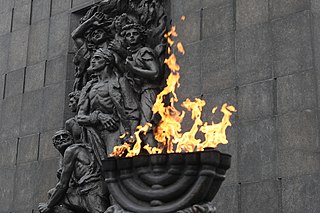
The history of the Jews in Poland dates back at least 1,000 years. For centuries, Poland was home to the largest and most significant Ashkenazi Jewish community in the world. Poland was a principal center of Jewish culture, because of the long period of statutory religious tolerance and social autonomy which ended after the Partitions of Poland in the 18th century. During World War II there was a nearly complete genocidal destruction of the Polish Jewish community by Nazi Germany and its collaborators of various nationalities, during the German occupation of Poland between 1939 and 1945, called the Holocaust. Since the fall of communism in Poland, there has been a renewed interest in Jewish culture, featuring an annual Jewish Culture Festival, new study programs at Polish secondary schools and universities, and the opening of Warsaw's Museum of the History of Polish Jews.

Konrad Rudnicki was a Polish astronomer, professor at the Jagiellonian University in Kraków, and a priest of the Old Catholic Mariavite Church.
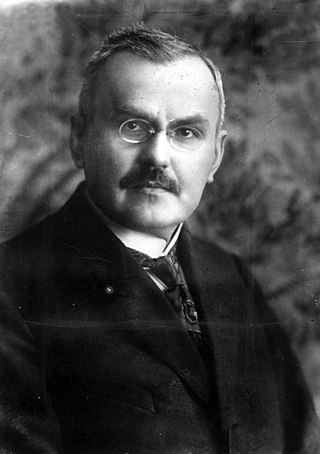
Władysław Dominik Grabski was a Polish National Democratic politician, economist and historian. He was the main author of the currency reform in the Second Polish Republic and served as Prime Minister of Poland in 1920 and from 1923 to 1925. He was the brother of Stanisław Grabski and Zofia Kirkor-Kiedroniowa.

Leopold Skulskipronounced[lɛˈɔpɔltˈskulskʲi]; served as prime minister of Poland for six months from 13 December 1919 until 9 June 1920 in the interim Legislative Sejm during the formation of sovereign Second Polish Republic following World War I.

Bolesław Ignacy Florian Wieniawa-Długoszowski was a Polish general, adjutant to Chief of State Józef Piłsudski, politician, freemason, diplomat, poet, artist and formally for one day the President of the Republic of Poland.

Roman Franciszek Rybarski was a Polish economist and politician. He was the foremost economist of the right-wing National Democracy political camp and creator of its economic program.
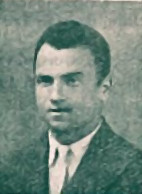
Szymon Datner was a Polish historian, Holocaust survivor and underground operative from Białystok, best known for his studies of the Nazi war crimes and events of The Holocaust in the Białystok region. His 1946 Walka i zagłada białostockiego ghetta was one of the first studies of the Białystok Ghetto.
Gunnar Svante Paulsson is a Swedish-born Canadian historian, university lecturer, and author who has taught in Britain, Canada, Germany, and Italy. He specializes in history of The Holocaust and has been described as "an expert on that period". He is best known for his 2002 book, Secret City: The Hidden Jews of Warsaw 1940-1945.
Polish culture in the interwar period witnessed the rebirth of Polish sovereignty. The nationhood along with its cultural heritage was no longer suppressed by the three foreign partitioners. The cultural development saw the retreat of the 19th century elite cultures of nobility as well as the traditional folk culture, and the rise of a new mass culture integrating Polish society closer to the new intelligentsia educated in the practice of democracy.

The National Radical Camp was an ultranationalist and antisemitic political movement which existed in the pre-World War II Second Polish Republic, and an illegal Polish anti-communist, and nationalist political party formed on 14 April 1934 mostly by the youth radicals who left the National Party of the National Democracy movement.
Roman Wapiński was a Polish historian, lecturer at the University of Gdańsk. He specialized in the history of the Second Polish Republic and right-wing National Democracy political camp, being the foremost historian of National Democracy. Wapiński was considered one of the foremost Polish historians.
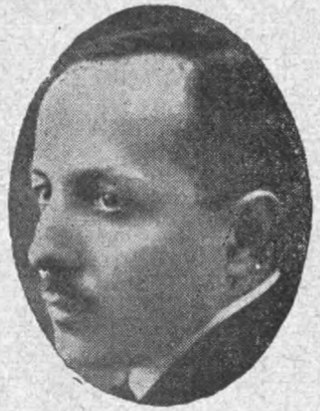
Maksymilian Apolinary Hartglas was a Zionist activist and one of the main political leaders of Polish Jews during the interwar period, a lawyer, a publicist, and a Sejm deputy from 1919 to 1930.
The Alfonse pogrom was a three-day riot in Warsaw, Poland. The violence led to the destruction of several dozen brothels, and to as many as 15 deaths. Accounts and analyses of the event differ with regard to its goals and participants.

Polish Armed Forces were the armed forces of the Second Polish Republic from 1919 until the demise of independent Poland at the onset of Second World War in September 1939.
Aleksander Zygmunt Hafftka was Polish Jewish historian and statesman.
History of the Jewish community of Bialystok, the capital of Podlaskie Voivodeship in northeastern Poland, dates back to the mid-17th century. The local Jewish community grew rapidly, and from the beginning of the 19th century made up more than half of the entire population of Bialystok: until the First World War, Jews made up 75% -66% of the city's population, but between the two world wars the proportion of Jews dropped to 50%-60% of the residents.
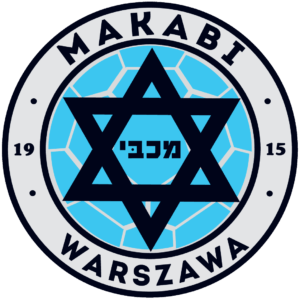
Makabi Warszawa, in English Makabi Warsaw, founded in 1915 in Warsaw, Poland was a Polish sports club founded by the Jewish Gymnastic and Sports Association "Maccabi" in Warsaw. It was the largest multi-section Jewish sports club in the Second Polish Republic.
After World War II and coming to power of the communist government in Poland, large scale nationalization occurred. Following the fall of communism in Poland in 1989, some of the formerly nationalized property have been subject to reprivatisation and restored to previous owners, their heirs or other claimants.
References
- ↑ Kultura polska: Nagroda KLIO 2004 at Culture.pl, 25 November 2004.
- 1 2 Szymon Rudnicki laureatem nagrody im. Jana Karskiego i Poli Nireńskiej at onet.pl, 5 November 2008.